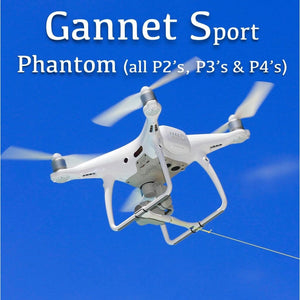
If you're considering using a drone for fishing, you'll likely want to learn more about the regulations. You can also view instructional videos on how you can fly a drone to catch a fish. Read our article about drone ethics if you have any questions. We will discuss some ethical concerns regarding drone fishing. And don't forget to check out our drone fishing gear guide.
Regulations for drone fishing
You might be curious about the regulations while you watch a drone fishing for tuna videos on YouTube. While there are many reasons to adhere to local laws, safety is the most important. You need to follow the right laws in order to protect the lives of both you and the fish. We'll be discussing the most important regulations in this article and how to ensure that you are following them. Don't forget the International Game Fish Association rules.
Drones cannot be operated over public places, including sporting events or stadiums. They are not allowed to carry weapons or operate within half a mile from sporting events. A drone operator must be able see all of their equipment at all times. Drones must not fly over stadiums or other critical infrastructure. They also cannot distract emergency vehicles. You can check with your local law enforcement agency to learn more about drone fishing rules.

While drone law has been adopted in many states, not all states have. For example, Illinois has recently enacted SB 2167. This bill bans drones from state parks. It also establishes privacy rights, and specifies the rules for recreational and commercial drone operators. It also bans drones interacting with wildlife and hunters. These new laws are expected be finalized within a few years.
Ethical concerns about drone fishing
Drone fishing is not without controversy. Some companies sell underwater drones with the ability to catch fish. The video content of these drones often contains the actual fishing process, which is remarkably similar to casting a line to a fish. However, the method of pulling a fish out of the water is somewhat different. Those who are ethically concerned about this type of fishing may want to look elsewhere for their entertainment.
While there are obvious advantages to using drones for fishing, some have argued that they may be cheating the fishing population. Even though fishing hasn't changed much over time, drones can be used to catch fish and may reduce the excitement of the chase. Drones could also be harmful to conservation. Here are some of the ethical concerns that you should consider before you decide to use a drone for fishing.

First, drone fishing is not the best option. Drone fishing may cause damage to the environment or overfish endangered species. While some states permit drones for recreational fishing, others prohibit it. Drone fishing has its limitations. They must be very expensive. Drones that are cheap might not have the GPS functionality, lifting capacity or control range required. A second problem is that drone fishing can cause fish to be lost if the line becomes tangled. The third issue is piloting.
FAQ
Where Are Drones Banned?
The FAA has banned drones from flying near airports, stadiums, sporting events, nuclear power plants, hospitals, prisons, and other restricted areas. They are allowed to fly at night by using GPS technology.
How can I keep drones from my home?
Drones are becoming more common for home surveillance. However they can also be a threat to privacy or security. If you want to avoid drone attacks, you should install motion sensors around your property and use them to detect any unauthorized flying objects.
Can I fly my drone around my neighborhood?
Yes! These are known as UAVs (unmanned air vehicles). There are many options for drones, from small quadcopters to larger fixed-wing aircraft. The FAA recently updated its rules regarding commercial UAV use. You can now legally fly them to business purposes. It is important to remember that UAVs are not allowed near airports.
What US states do drones are legal in?
You can legally operate a drone for hobby purposes. The Federal Aviation Administration (FAA), has established guidelines that allow the use of small unmanned aircraft systems (UASs). Before they can be flown, these UASs need to be registered with FAA. If certain conditions are met, the FAA allows commercial operators to fly these UASs.
Statistics
- According to ZipRecruiter, the minimum hourly wage of drone pilots is $20. (thedroneu.com)
- With the top 10% making over $100/h and the bottom 10% making as low as $10/h. (dronesgator.com)
- According to industry research from ZipRecruiter , there are 10 cities where the typical salary for a Drone Pilot job is above the national average. (dronesgator.com)
External Links
How To
How to Fly Drones for Beginners
A drone refers to a remote-controlled aircraft designed for aerial photography, surveillance and scientific research. Drones are a technology that has been around since World War II. DJI introduced their Phantom series of quadcopters in 2010, but commercial use only began in 2010. From beginner-friendly drones such as Parrot AR Drone 2.0 through professional-grade multirotor craft like DJI Mavic Pro, many types have been available.
There are many options for flying a drone.
-
Remote control - This allows you to control the drone from your hand. There are two main types of controllers: On/Off switches (like a radio) and joysticks.
-
Manual Control – This method lets users remotely control the drone by using a smartphone app. You must keep track of the location where you want the drone to go and follow the instructions from the app.
-
Autonomous Flight: This means that the drone will take care of all the piloting. It's basically flying autonomously without any human intervention. To enable autonomous flight, the drone should have a built in camera and sensors capable recording images and data.
-
Triggered Flying - This method works in the same way as manual control. However, the pilot has to manually set up a route for the drone and it follows that route until reaching the endpoint. Once the programmed route has been completed, the drone returns to the base automatically.
-
Landing Gear – Some drones are equipped with landing gear, which allows them to safely land if they lose power during flight.
-
Goggles – Pilots often wear goggles while flying to keep themselves safe from any debris.
-
Camera – Some drones have cameras, which allow you to take photos or videos from up high.
-
Obstacles. Some drones can have obstacle avoidance technology that stops them from hitting obstacles.
-
Speed - Drones can reach speeds up to 40 mph.
-
Battery Life - Most drones can last between 20 minutes to 3 hours, depending on how much power you're using.
-
Some drones are capable of traveling up to 30 miles depending upon their make and model.
-
Power source - Not all drones can use an external power source. Others can run on internal batteries.
-
Weight - Some drones are lighter than others, while some models can weigh as much as 4 pounds.
-
Size - Drones can range in size from tiny devices that can fit in your palm to heavy crafts that weigh 50 pounds.
-
Price - From high-end models that cost thousands of dollars to low-cost options that start at $100, all drones fall under a certain price category.